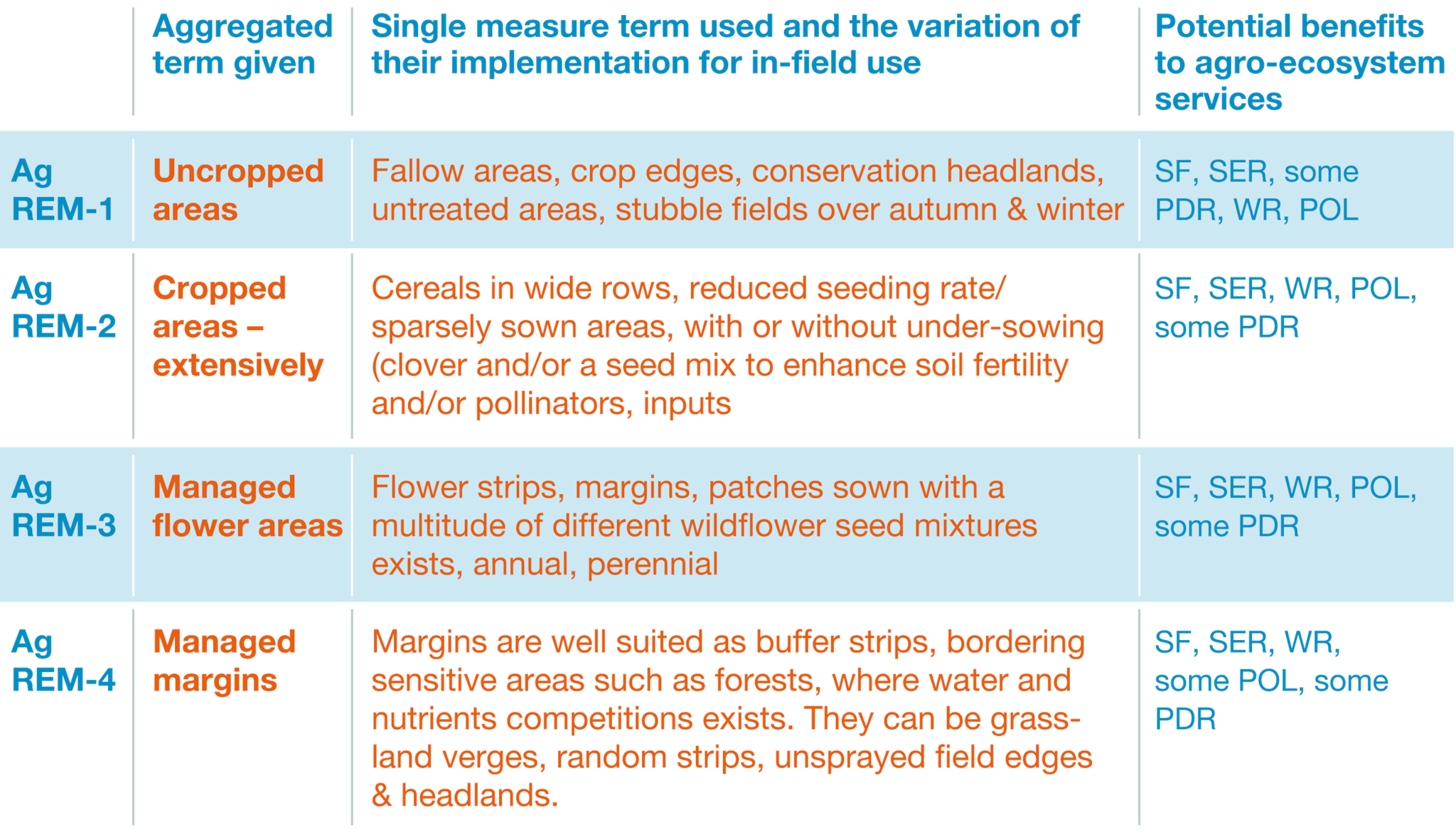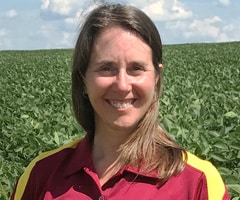Emphasis Soil

Integrating Crop Production and Biodiversity
As millions of hectares are cropped each year, farmers strive to manage their land sustainably. For many of them, farming and biodiversity are already compatible goals.
Crop rotation, reduced tillage systems and other good agricultural practices can integrate biodiversity and production goals. What else can farmers do to increase resilience of their land? And how does biodiversity, the variety of species, actually contribute benefits to crop production?
Annik Dollacker, responsible for biodiversity and ecosystem services in Regulatory Policy at Bayer AG, joined forces with various stakeholders to answer these questions. “In the last decades, we’ve observed that the sciences of agriculture and ecology developed in parallel.” For her and others, this is an issue: “Farming’s viability is often left out of conservation policy discussion. It seems farmers’ needs are considered secondary, or even lost. It’s time to integrate both disciplines in a pragmatic way,” she says.

Dollacker and stakeholders looked at how ecosystem services could be enhanced within agro-ecosystems: Ecosystem services are the benefits people obtain from nature. They are essential for human wellbeing. The most relevant agro-ecosystem service for farming is soil fertility. Each and every crop depends on it. Farming also depends on a range of other cost-free benefits, including nutrient cycling, organic matter provision, soil erosion regulation, water regulation, pollination, and pest and disease regulation.
These services are often provided by soil organisms (such as microorganism and earthworms), insect pollinators and predators. “In agriculture, the focus has been very much on yield provisioning rather than on supporting and regulating ecosystem services,” says Dollacker. “We’ve often lost sight of how nature supports crop production over time. Trade-offs need to be made between taking from nature to improve yields and giving back.”
The Definition of Resilience
Resilience of an agroecosystem is the ability to recover, adapt and reorganize after disturbances. It is “the resilience to all kinds of shock, including completely novel ones,” generated by multiple factors such as habitat loss and fragmentation, and changing weather patterns (climate change) as well as other drivers of change.
Mainstreaming biodiversity
“Mainstreaming of biodiversity means the integration of the conservation and sustainable use of biodiversity in both cross-sectoral and in sector-specific plans such as agriculture, fisheries, forestry, mining and others. It implies changes in development models, strategies and paradigms. Mainstreaming biodiversity is not about creating parallel and artificial processes and systems, but about integrating biodiversity into existing and/or new sectoral and cross-sectoral structures, processes and systems.”
Source: CBD (Convention on Biological Diversity) COP13 (Conference of the parties13), Cancun, Mexico
More than good agricultural practice: an EU perspective
Farmers apply good agricultural practices such as crop rotation, including planting of cover crops and diverse crops, reduced tillage systems and plant nutrition management. These practices avoid soil erosion and enhance soil organic matter, thus contributing to resilience: the agro-ecosystem’s capacity to withstand unpredictable disturbances such as those generated by heavy rains, floods or droughts. “More and more urban expansion or road construction across the landscape mean that habitats are being lost or fragmented. This affects crop production and biodiversity,” explains Annik Dollacker. “So it’s important to consider strategies beyond crop management practices to further enhance resilience.”
To that end, Dollacker and stakeholders (ifab Mannheim, European Landowners’ Organization) analyzed an exhaustive list of environmental enhancement measures (EEMs) from an European study. Their benefits to biodiversity have been well researched. EEMs mostly provide foraging and nesting opportunities for birds, often single species, insects, or small mammals by establishing flower areas, ponds or hedges, while using agricultural land. The team checked the EEMs benefits for crop production: four groups of measures remained. They are hereafter called “Agroecosystem-Resilience Enhancement Measures” (AgREM) and are supportive of many species at the time. The AgREMs include uncropped or extensively cropped areas, managed flower areas and margins (see table).
AgREMs –
Agroecosystem-Resilience Enhancement Measures

“We concentrated on measures that could be easily implemented within large fields of arable crops with existing machinery, and do not require much labor and time from farmers. Besides benefitting biodiversity through habitat provision, these measures support the delivery of agro-ecosystem services,” she summarizes. Most of the AgREMs can contribute to soil erosion reduction, organic matter enhancement and water regulation and can lead to improved pollination in crops such as oilseed rape and sunflowers. If AgREMs are applied in less productive areas of fields, such as those prone to erosion or difficult to access with machinery, they address the needs of farming. Farmers know their fields well, and new digital imaging tools will allow even better evaluations of land qualifying for AgREMs within fields. She adds, “If farmers decide to implement AgREMs on less productive sub-field areas, they can save time, labor, inputs, fuel and machinery costs without affecting the overall profitability of their farm.”
AgREM-1: Uncropped areas Uncropped areas such as fallow areas, crop edges, strips and untreated areas help soil erosion avoidance, organic matter provision and water regulation. These areas also potentially support pollination and pest regulation through the flower plants that grow on them. When stubble are left on fields over winter, they provide habitat for farmland birds. However, this may contribute to soil erosion.
AgREM-2: Extensively cropped areas A barley field planted in wide rows (double-spaced rows) has been undersown with a mixture of different flowering plants and cover crops. The objective is to increase the organic matter content in the field (soil fertility) and the pollination potential in the landscape.
AgREM-3: Managed flower areas Flower areas, such as strips, patches or margins increase pollination in the landscape or in the crop. In wind-pollinated cereal crops as shown here, they do not contribute to pollination. However, phacelia, a cover crop, enhances soil structure and organic matter provision – a good example of a synergy benefiting production and biodiversity.
AgREM-4: Managed margins Managed margins are particularly suited for implementation along sensitive areas such as forests. These areas often lack water and nutrients as trees take them and are thus less productive. These margins have dual use: they serve the purpose of buffer strips and lay fallow less productive areas. They can be grassland verges and untreated areas supporting soil erosion regulation, organic matter provision and water regulation. Sometimes they can also be used for biomass production or provide grazing areas.
“Widely applied, for instance, in major arable field crop areas of cereals, maize, oilseed rape and sunflowers, explains Dollacker, AgREMs could have a significant impact,” explains Dollacker. These crops account for 70 percent of the total arable land in Europe and are often cultivated in landscapes that contain little non-crop habitat. “Here, AgREMs can provide ecological networks of semi-natural habitat at landscape level, which is beneficial for pollinators or birds,” she adds.
US farmland: larger cropped areas

US farmland typically has even fewer borders, as the average field size is about ten times larger. One approach to create habitats within fields similarly as the AgREMs mentioned above, while keeping farmers’ needs in mind, is the STRIPS project. Dr. Lisa Schulte Moore, professor at the Department of Natural Resource Ecology and Management, Iowa State University, helps spearhead this approach through the STRIPS project. “STRIPS stands for Science-based Trials of Rowcrops Integrated with Prairie Strips,” she explains. “Prairie strips are intentionally planned to provide benefits for both agriculture and biodiversity. We have various points in mind: providing benefits for farmers, including stopping the loss of soil and nutrients from farmland, and creating habitat for birds and beneficial insects.”
Historically, the dominant vegetation in a Midwest US state such as Iowa is prairie – very different to the EU; it consists of many native plants. Dr. Schulte Moore explains that the STRIPS team works with farmers in Iowa to plant prairie strips within corn and soybean fields. “Sowing the strips in narrow bands along contours and at the base of slopes on corn and soybean farmland is a relatively low-cost way to combine different agricultural benefits. They slow down the water flow after heavy rainfall and support infiltration into the soil.” The cost of establishing prairie strips is low in comparison to other measures. The team proposes placing the strips on ten percent of sloping fields, which, if aligned with lower producing areas, can further reduce time, labor and input costs.

Tim Smith from Eagle Grove, Iowa, is one of the farmers’ who works with the STRIPS team. He implemented prairie strips four years ago on his 320-hectare farm. More than 20 different species, including grasses and flowering plants, grow in his prairie strips, providing an eye-catching landscape throughout the year. But that’s not all: “They are complementing and even enhancing the benefits of other crop management practices, such as the use of cover crops, strip tillage and nutrient management practices, which all contribute to improved soil health,” he says. “Since I’ve been using prairie strips, I feel like I’m really keeping the soil in the field.”
10 million hectares of arable land are lost every year globally, although the population is increasing and land is limited. Hence, crop production has to be improved and made more resilient. See how this can be done.
Future perspectives for AgREMs
Currently less than a few hundred out of Iowa’s overall 9.3 million hectares of farmland comprise prairie strips. Yet Dr. Schulte Moore and farmer Tim Smith agree that this development is still significant, and growing. It’s getting attention, Smith adds, “because prairie strips are good for farmers and society: People love them.”
In Europe, farmers have been advised for years to apply EEMs to protect biodiversity. However, these measures’ benefits to farming are usually not highlighted, and research to substantiate them is limited. “We must turn to synergies, and emphasize that measures, such as the AgREMs, integrate the sciences of ecology and agriculture. The short list of four groups of AgREMs is a first step,” Dollacker explains. “They facilitate outreach to farmers and support their decision-making. As they benefit farming, they may be better accepted than measures which only benefit society.” This approach is a practical example to mainstreaming biodiversity in crop production, as called for by the UN Convention on Biological Diversity – short for Biodiversity.
UN Convention on Biological Diversity (CBD)
The objectives of the UN Convention on Biological Diversity (CBD) include the conservation of biodiversity and the sustainable use of its components. This year the CBD celebrates 25 Years of Action for Biodiversity. Bayer supports these international efforts.















